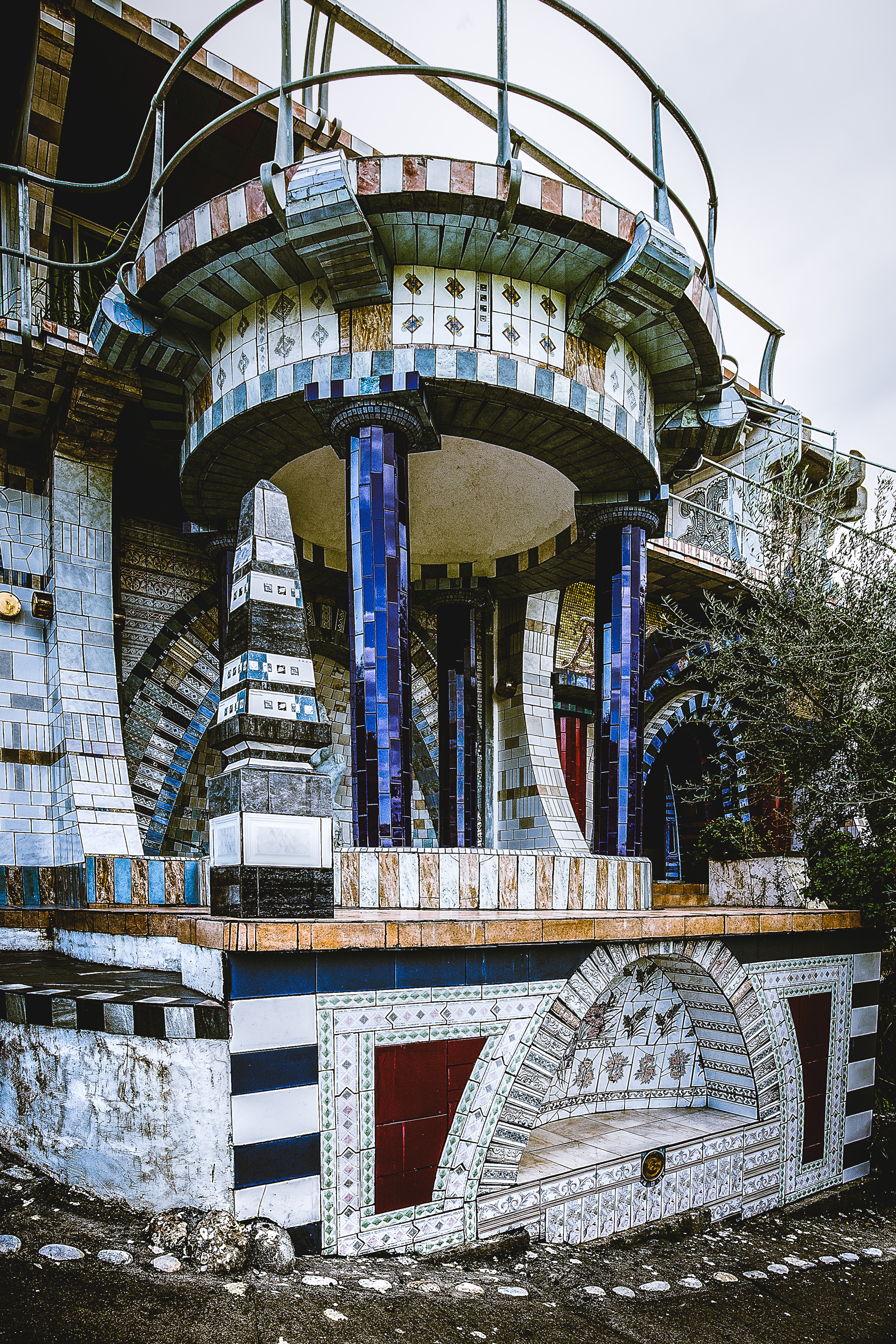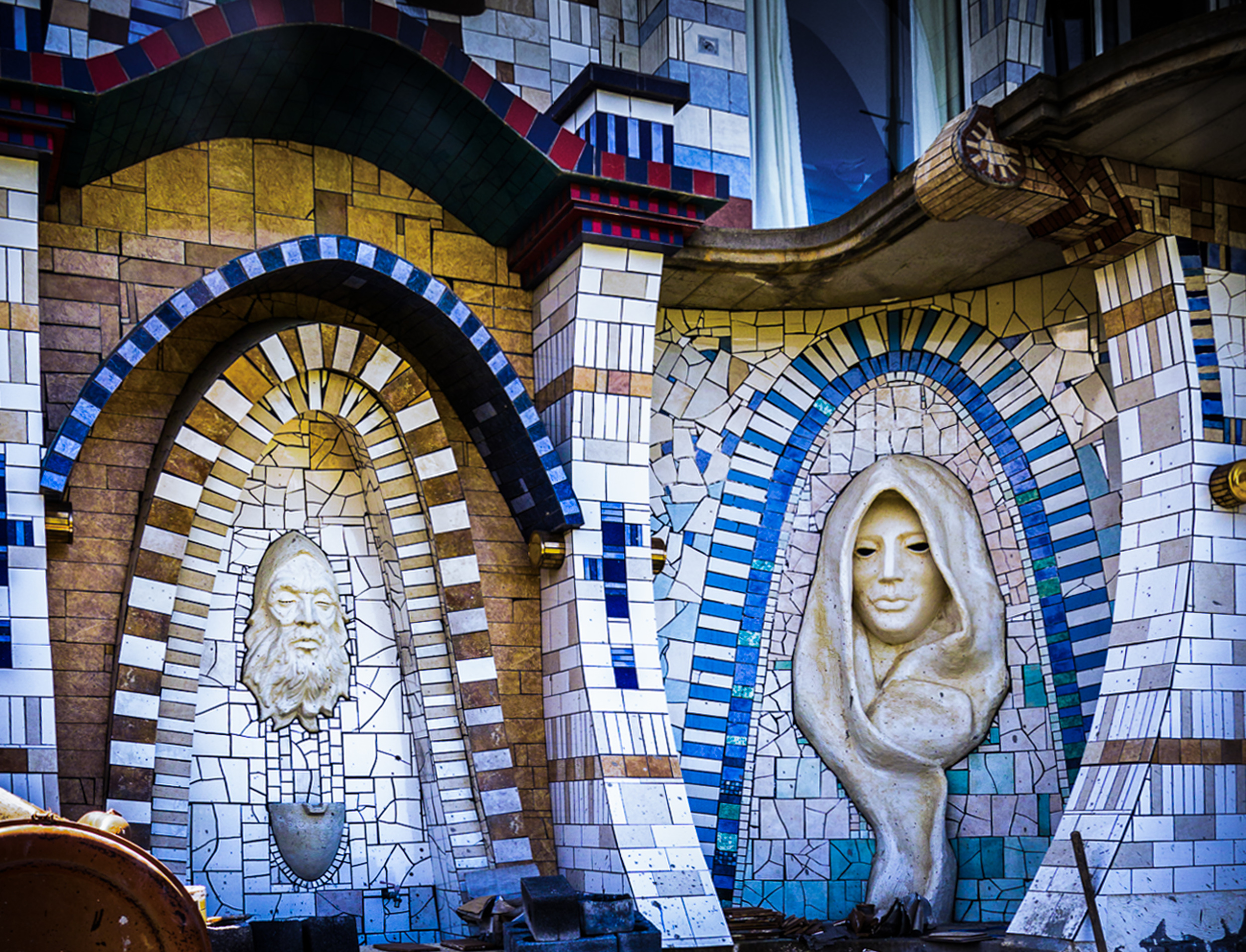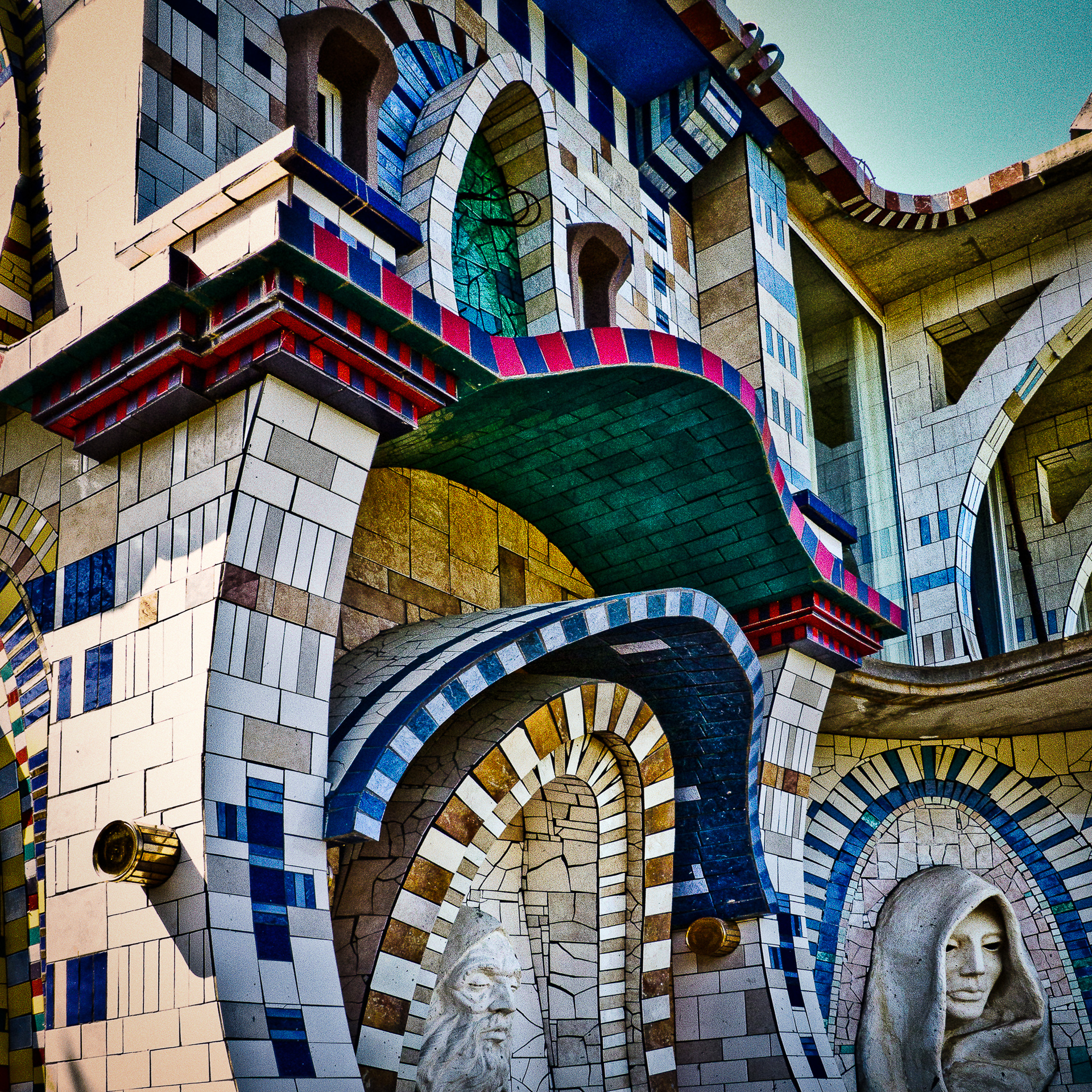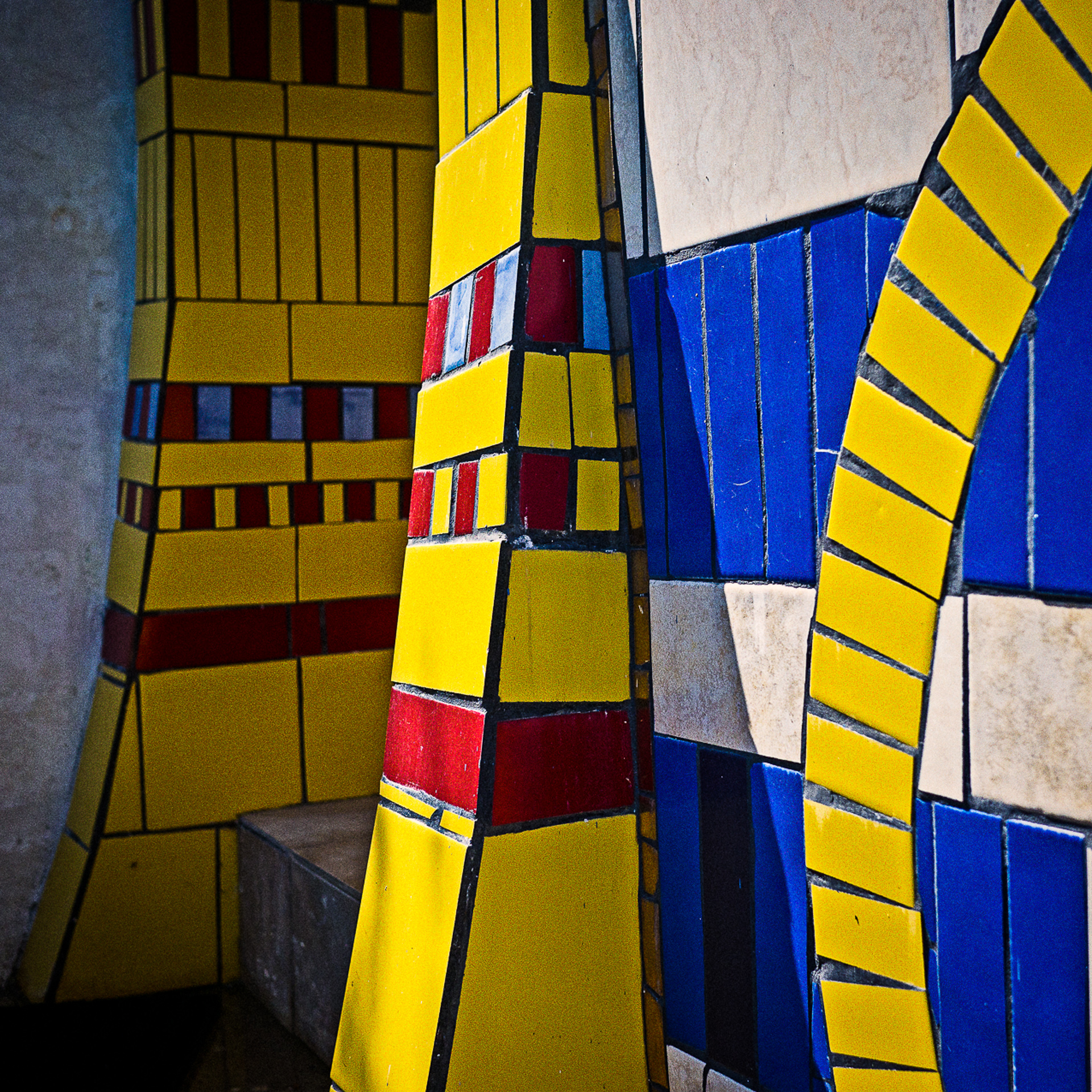Now you might imagine when you look at the big structure, that the ceramic tiles which cover most of its external surfaces, were part of some plan. Not so. We had been constructing the thing from cast concrete and cement blocks for some time before tiles made an appearance. The dead cement greys gave it the air of a nuclear bunker or a Soviet railway station. I quite liked it.
At some point though, we did buy some ceramic tiles, maybe for the shower cubicle in the workshop. The tile place on the road out of town, had a showroom, with mocked up examples of tiled bathrooms and kitchens. This demonstration décor was changed every few months and the old tiles were simply knocked off and left in a pile in a corner of the yard, almost all of them chipped or broken.
When I first saw this pile of broken tiles it was something of an epiphany. Some tons of the stuff, there must have been. The people at the showroom were very happy for us simply to take it all away in the truck. For a while we went back each time they broke up their specimen kitchens and bathrooms. Finally, we had a big, big pile next to the workshop, slightly smaller than Rome’s Monte Testaccio, but not much.
We managed to sort some of the broken tiles into different types and colours, but mostly we found ourselves simply foraging through the vast unsorted heap and sticking the damaged ceramics on the exterior surfaces, not exactly at random, but quite freely. Linda’s approach to this work was probably a bit more disciplined than mine.
Most of the surfaces in the big structure are curved in some way, and, obviously, ceramic tiles are flat. We circumvented this difficulty by applying tile cement thickly to each piece and placing it where we wanted it to go, and if it didn’t fit closely enough to the shape of the wall , hitting it with a hammer and pressing the bits home with our fingers. Sounds a bit primitive, but it works, and the resulting ceramic surfaces have a certain mad complexity, which makes it hard for the eye to rest.
.
We used black grout between the tiles on the whole of the ceramic exterior. Occasionally, I have used a kind of sienna coloured grout on mosaic panels, to warm up the flesh tones.
Black grout is a device used on Hundertwasser’s Kunsthaus in Vienna, and elsewhere in his work, and we did travel to Vienna and to Blumau to see his stuff. People sometimes say that our structure reminds them of Hundertwasser. It’s hard to know what to say to that. We used coloured tiles and black grout, as did he, but it’s not clear to us that the resonance extends further than that.
After a while we found that we wanted stronger colours. The standard ranges of domestic tiles run through various kinds of white and buff with not much in the way of bold colour. Our big heap was, with some striking exceptions, more or less biscuit/vomit coloured. We found ourselves buying boxes of more intensely coloured tiles. I bought a lot of canary yellow, which at the time seemed like a step too far. We bought reds and some terrific blues. Decent greens were next to impossible to come by.
The figurative mosaic panels just evolved, at least that’s the way it seems in retrospect. We had a large quantity of more or less flesh coloured tiles and I found myself making a big portrait panel in the entrance to the building. I cut tiles up into two centimetre squares, which is actually quite big, as traditional tesserae go, but I didn’t want to go completely potty. As it was, I used more than two thousand of them on that first panel. Conventional tesserae are obtainable, but stupidly expensive, by the way.
Whenever possible, I dragooned unsuspecting visitors into this numb work of cutting up tiles Can we help, people would often ask, is there anything we can do to help? Ah, well, as it happens….
I kept the different shades/hues of the little squares in separate containers to make a kind of palette, and the process of actually making the mosaic is not entirely unlike painting, though mistakes are more painful to rectify. I did this first panel during one killingly hot August when working outside would have been intolerable.
In fact, even during the hottest spells in July and August, it is usually possible to work a few hours each day if you are prepared to start before it gets light. In the evening it tends to be a bit stuffy as the great mass of material in the building gives back the heat of the day.
After that first panel, I went on to do a number of others. The work is oddly satisfying, not exactly meditative, but it closes down your focus, reduces the world to a few square centimetres, for a while that is, before ennui takes over. If I do too much of it on any given day, I find myself doing it through the night in a waking dream.
We did buy two square metres of gold porcelain tesserae from a rather upmarket showroom in town. The cost still makes me wince, though the effect was excellent.
As the Greek economy began to decline, from about 2008, businesses in town started to close up. We found the gates of the place where we used to get broken tiles shut one day. About a couple of years later, another tile yard put up a big hand painted banner saying that all tiles were half price. Naturally I went for a prowl about and did in fact buy some at that stage, but, having talked to the bloke who ran the place, it was clear that they were closing down and that the business had a deadline date for vacating the rented yard. So, I just hovered until the final few days of this closing down sale, when all they wanted was to be rid of their remaining stock at any price. I bought tons of tiles for very little money. I was particularly happy with a big batch of fancy tiles, the sort of thing that gets used sparingly in kitchens and bathrooms as edging or decorative detail. New, these tiles cost a lot, but we were able to deploy them in considerable profusion, because they cost us next to nothing. It was like Christmas.
We weren’t able to use everything. Some of this fancy ceramic must have been in stock for decades. There were lots of little tiles with nineteen seventies style motifs of coffee pots and wine bottles, or chickens and eggs: lots of floral stuff, lots of stuff my mother would have described as ‘contemporary’. I have now used up most of these tiles, one way or another. My grip on the idea of good taste seems to have gone entirely.




